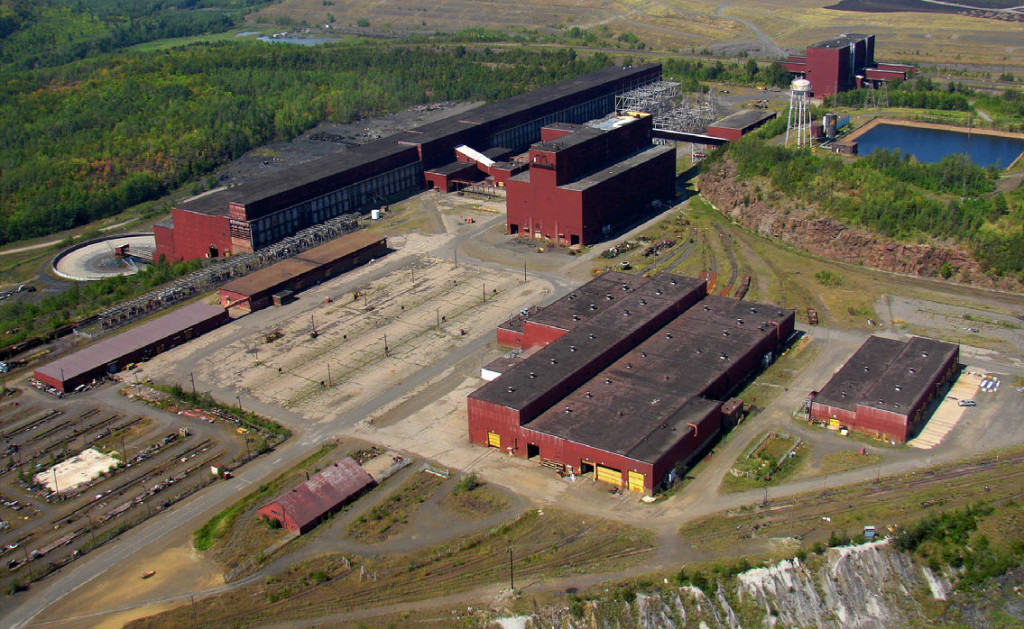
A nearly half billion dollar dispute is brewing between the Minnesota Department of Natural Resources and PolyMet Mining Corp., which hopes to open the state’s first copper-nickel mine on the Superior National Forest.
The conflict is over how much money PolyMet must provide to pay for clean-up and closure if the company goes bankrupt or is otherwise unable to perform remediation itself. “Financial assurance” is a key protection for taxpayers and the environment, seeking to prevent mining companies from leaving the government footing the bill.
State law requires mining companies to provide revised estimates every year for closure costs during the next 12 months. Last week, the Environmental Protection Agency announced it was dropping the federal requirement for financial assurance.
PolyMet pledges $544 million
On December 13, PolyMet released its estimate of the funds it would need: $544 million. The projection only covers the first year of mine operations, while clean-up and closure costs are expected to peak later in the mine’s life, when its scale and complexity is greatest.
“Financial assurance provided by the company is essentially an insurance policy,” said Jon Cherry, PolyMet’s president and CEO. “Costs of reclaiming and closing the site are already accounted for in our project plan. It protects the state and taxpayers from incurring any costs should PolyMet not be able to do so.”
The company also used the opportunity to criticize the state’s sulfate standard to protect wild rice. It stated water treatment needed to meet the sulfate standard is the single biggest driver of costs, and noted the standard is 25 times lower than the federal drinking water standard. Minnesota’s sulfate standard is restrictive because the state is one of the only places in the country where wild rice grows naturally.
If the state revises the sulfate standard based on recent research, it could affect the closure costs. The state and company anticipate it will cost about $5 million per year to cover treatment after closure.
Double the money
Previously, the Mining Truth coalition had hired a Montana-based mine engineer to estimate the necessary funds, and publicized $934 million as the sufficient amount.
When the Star Tribune requested documents from the state, it found the DNR estimates PolyMet would need to provide $1.039 billion at the mine’s peak, when remediation costs would be highest.
The highest closure costs are anticipated for year 11 of the mine’s 20-year lifespan. The state also says it needs approximately $500 million by the time the mine closes to cover perpetual water treatment at the site.
The form of financial assurance is also a matter of debate. Rather than providing the damage deposit in cash, the company would largely rely on surety bonds, reported the Timberjay. The paper quoted a state-commissioned report from financial consultants in 2016 that raised questions about the company’s ability to secure such bonds.
“For a small or new mining company like PolyMet it would be very difficult to obtain a reclamation bond if there is any risk of bankruptcy, which would be indicated if the financing or economics are not solid. It would be even more difficult to find a surety willing to guarantee a long-term financial assurance liability unless the project’s economics are very strong.”
Everyone from state agencies to anti-mining advocates point out it would be very difficult politically for the state to shut down the mine after it’s operating, if it can’t provide larger financial assurance assets.
Covering closure, not catastrophe
All of the estimates above include mine closure and long-term water treatment costs. None of them include extra funds to cover a catastrophic incident, as described by the Duluth News Tribune.
Clean water advocates say the state needs to be protected in case of a disaster such as a tailings basin dam failure. Such an accident at the Mount Polley Mine in Canada three years ago discharged more than 1.3 billion gallons of mine waste into nearby streams and lakes. A government investigation blamed the accident on the same tailings basin design PolyMet plans to use. The company only had provided $14.5 million in financial assurance, while clean-up is projected to cost $50 million to $500 million.
“Minnesota can’t afford to get this wrong,” Paul Austin of Conservation Minnesota and the Mining Truth coalition said in July. “Not protecting taxpayers from PolyMet’s cleanup costs would make this a risky financial deal for Minnesota.”
PolyMet’s financial assurance proposal includes a $10 million insurance policy to cover general liability, including pollution.
“Based on what we’ve seen in Superfund cleanups at mines across the country, and the catastrophic cost to cleanup up sulfide mining’s legacy, is that $10 million is a drop in the bucket,” Paula Maccabee of WaterLegacy told the newspaper. “When the $10 million runs out the cost is going be borne by taxpayers, through Superfund, or by the people who live downstream. … That’s the history of mine cleanup in this country.”
PolyMet says it would increase the liability insurance coverage amount as the mine is developed and the risk increases.

